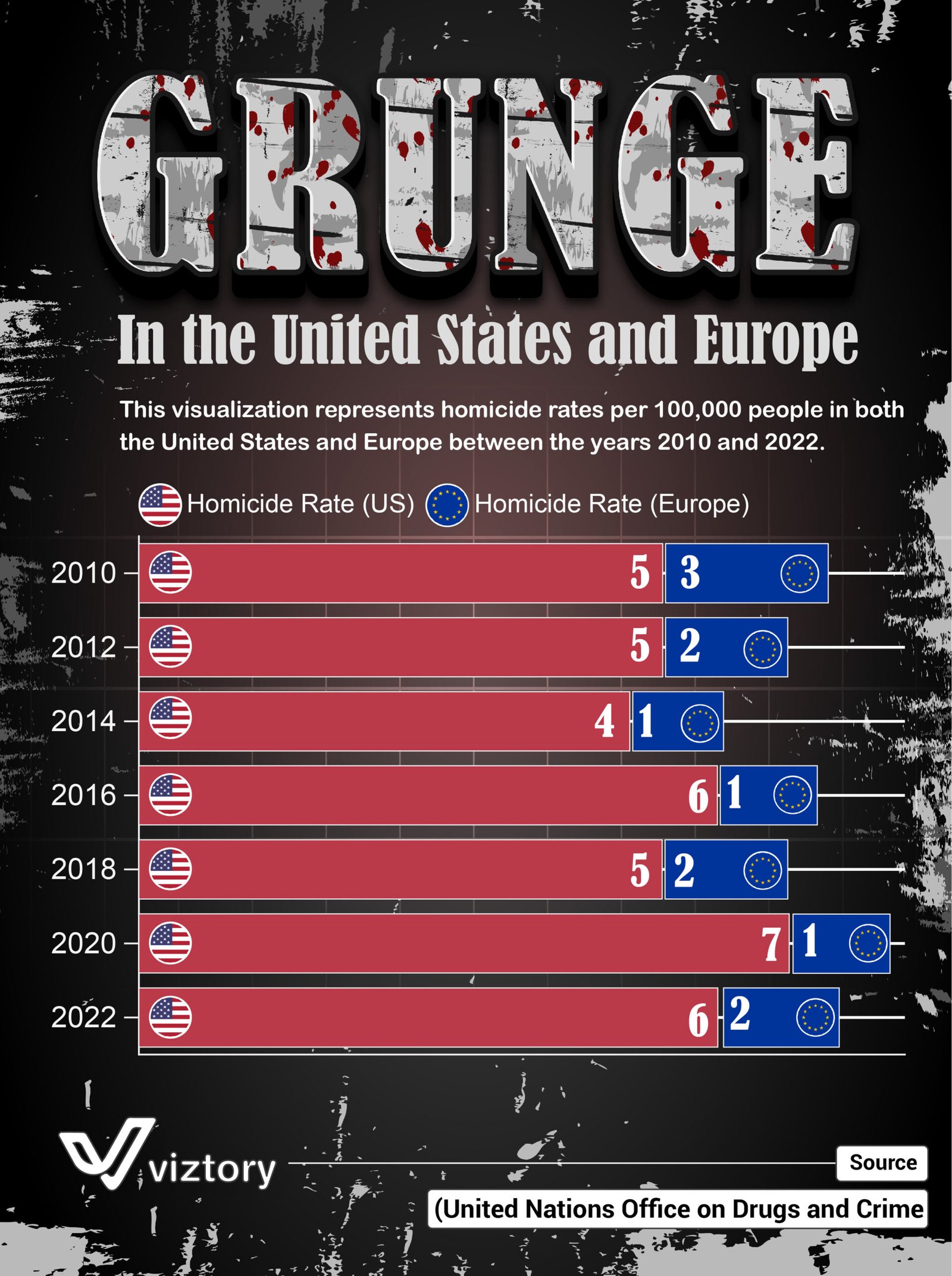Grunge: In the United States and Europe
-
Feb, Mon, 2025
This visualization highlights homicide rates per 100,000 people in the United States and Europe from 2010 to 2022. The data underscores a stark contrast between the two regions, with the U.S. consistently reporting higher rates compared to Europe. These trends not only reveal societal challenges but also their potential impact on public health and community well-being.
The Connection Between Crime and Public Health
Homicide rates are more than just statistics; they reflect underlying issues that can directly affect public health and social stability. High crime rates are linked to increased stress, fear, and reduced quality of life for communities. Here’s how these trends intersect with health:
Mental Health Impacts
- In areas with higher homicide rates, individuals often experience chronic stress, anxiety, and depression due to the constant fear of violence.
- Communities face long-term trauma, especially children and young adults exposed to such environments.
Healthcare System Strain
- Violent crimes contribute to a surge in emergency medical cases, placing pressure on healthcare infrastructure.
- Rehabilitation and mental health services face increased demand in affected regions.
Economic and Social Health
- High homicide rates disrupt economic activities, reducing access to jobs, education, and healthcare resources.
- Neighborhoods with frequent violence often face decreased investment, leading to poor living conditions and health disparities.
Comparing the U.S. and Europe
United States:
The homicide rate has fluctuated, peaking at 7.1 per 100,000 in 2020. Contributing factors include gun accessibility, socio-economic inequality, and systemic challenges in addressing root causes of violence.Europe:
With rates remaining consistently low (1–3 per 100,000), Europe benefits from stricter firearm regulations, extensive social safety nets, and community-focused policies that promote stability.
Addressing the Challenge
Reducing homicide rates requires an integrated approach involving public health, education, and law enforcement. Here’s how technology and policies can help:
- Data-Driven Crime Prevention: AI and predictive analytics can identify high-risk areas, enabling targeted interventions.
- Community Programs: Initiatives that engage youth and provide education can reduce the likelihood of criminal behavior.
- Gun Control Policies: Stricter firearm regulations, as seen in Europe, can significantly lower violent crime rates.
Building Safer Communities
This data emphasizes the need for holistic strategies to improve safety and health outcomes. By addressing the root causes of violence, regions like the U.S. can work towards fostering healthier, more resilient communities. Collaboration between governments, healthcare providers, and local organizations will be key to achieving this goal.

